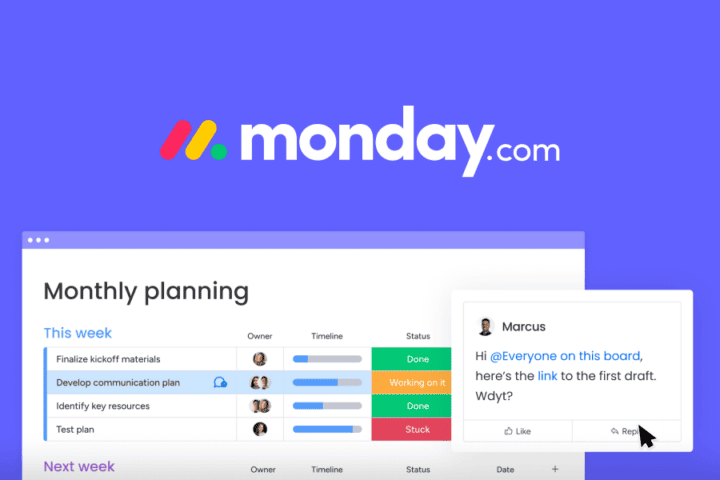You’ve probably already faced the challenges of managing your company’s IT services. Maybe your sales rep suffered a computer failure and couldn’t reach a technician in time to connect with a potential customer. Maybe you’ve struggled to gain full insight into the activities of your remote employees. The situations are manifold, which is why having a service desk in times of business digitalization is an imminent necessity.
A service desk not only offers features that facilitate the management of tasks and requests within your company, but also provides a solid basis for consolidating IT operations between departments. Both on-site and with employees around the world.
If you have not yet decided on an ideal solution for your company, then read these 4 functionalities that every service desk must have to become your best ally in IT service delivery:
1 SLA management
When offering services, we must ensure compliance with agreements in favor of both parties. However, such agreements are not always made using the same terms. For this reason, a feature that should never be missing in a service desk is the possibility of managing SLAs with different service levels. Having the option to establish multiple policies for different working hours or incident categories.
Bearing in mind that you may have a team working at a global level or fulfilling diverse activities that require specific approaches. These need service level objectives according to their work centers-location.

An effective service desk should offer the ability to easily resolve tickets based on priorities and automate escalation rules to communicate SLA breaches. Of course, a service desk should be able to align with your team’s needs. Helping you set expectations on service delivery to your employees from a realistic point of view.
The best option is one that allows you to define deadlines for tasks or assignments based on different criteria: these could be the origin, the type, the department in charge or the priority of the ticket. It also offers the possibility of notifying departmental leaders of non-compliance automatically. Providing visibility into the service delivery and performance of your team.
2 Service Desk with unified catalogs
Many service desks neglect the fact that employees need an easy-to-use platform. As easy to use as any online ordering platform or mobile app. It’s important that the service desk you choose can provide a shopping experience without complex steps. Intuitive and at everyone’s fingertips, with a catalog of services published on an end-user portal.
 Having unified service catalogs also means offering the option of self-service. This way, users can get to the point with what they really need. Simplifying the search process, with browsing capabilities that are also available on mobile. Identifying and acquiring the exact services they need, without errors.
Having unified service catalogs also means offering the option of self-service. This way, users can get to the point with what they really need. Simplifying the search process, with browsing capabilities that are also available on mobile. Identifying and acquiring the exact services they need, without errors.
It is also important that your service desk can provide Information about the availability of services. Even if your company cannot offer certain services, such as requesting new assets, all the time, it can be helpful if employees know about the availability of services by viewing the catalog, and receiving a notification if an item is not available at the time of the request.
A service desk that offers this capability can also allow you to plan purchases or allocate funds to departments based on service catalog information. Adapting to your branding policies and allowing you to configure the fields (visibility of service items in your catalog) according to the needs of your departments or work teams.
3 Unified task management on your service desk
The most important thing and one of the main reasons why a company chooses to have a service desk is to be able to unify tasks and orchestrate their solutions. All within the same platform. So it is feasible to assume that a service desk that does not have a platform to manage tasks in a unified way, is an incomplete platform.
 Such a unification of tasks is what can allow you to prioritize incoming requests and improve service delivery. Relying on service level agreements that can be customized. It’s also how you can deliver multichannel support. Allowing end users to contact the helpdesk through a variety of channels. Email, self-service portal, a mobile app, or a chatbot.
Such a unification of tasks is what can allow you to prioritize incoming requests and improve service delivery. Relying on service level agreements that can be customized. It’s also how you can deliver multichannel support. Allowing end users to contact the helpdesk through a variety of channels. Email, self-service portal, a mobile app, or a chatbot.
By having a service desk that offers a unified view of tickets and tasks, you get visibility into all your tickets and can track their progress with a quick glance at the dashboard. This also means your team can collaborate from a single screen. Knowing who is working on a ticket, its priority and status.
4 Intelligent automation
Last but not least: automation. It cannot be a robust service desk if it does not offer perfect optimization and synchronization of departmental tasks. Plus automatic, error-free management of long and repetitive processes.
 Moreover, a service desk in 2021 must have intelligent automation. That is, use Artificial Intelligence and Machine Learning to create rules and configure workflow automations. Agent assignment, multi-stage approval workflows, ticket classification and prioritization according to various variables. Based on historical ticket data and taking into account the impact and urgency of each case.
Moreover, a service desk in 2021 must have intelligent automation. That is, use Artificial Intelligence and Machine Learning to create rules and configure workflow automations. Agent assignment, multi-stage approval workflows, ticket classification and prioritization according to various variables. Based on historical ticket data and taking into account the impact and urgency of each case.
Smart automation at a service desk can also help keep all involved parties fully informed. Through timely notifications that are automatically triggered based on configurable rules. In addition to automatically assigning tickets to specific agents or groups based on workload or special skills.
GB Advisors is a group of specialists in the area of information technology and cybersecurity. We are pleased to tell you that there is a service desk with all these features and more, its name is Freshservice. Let us give you a demonstration of the benefits of this tool. We will also show you how it can fit your company perfectly, free of charge.



